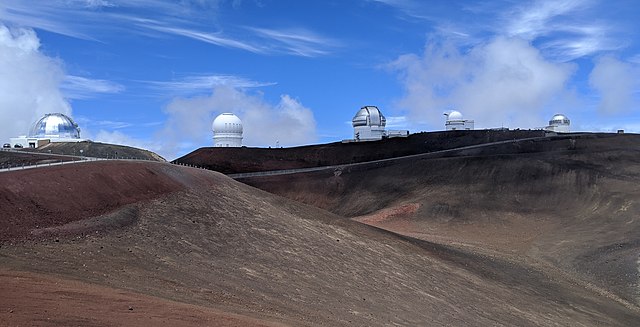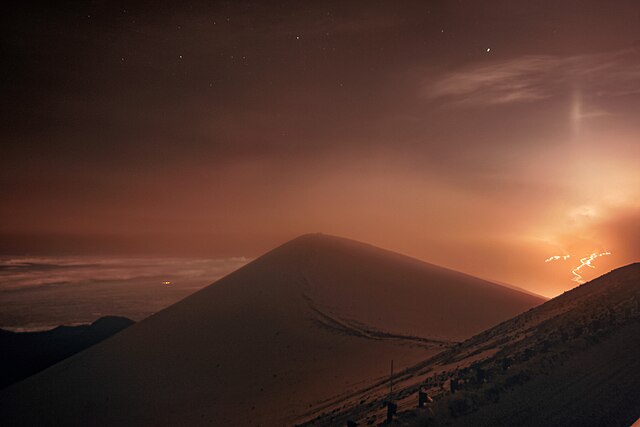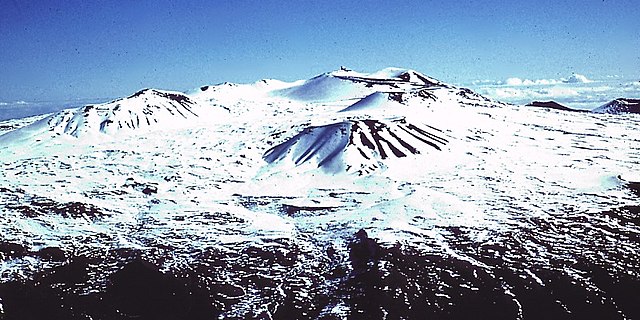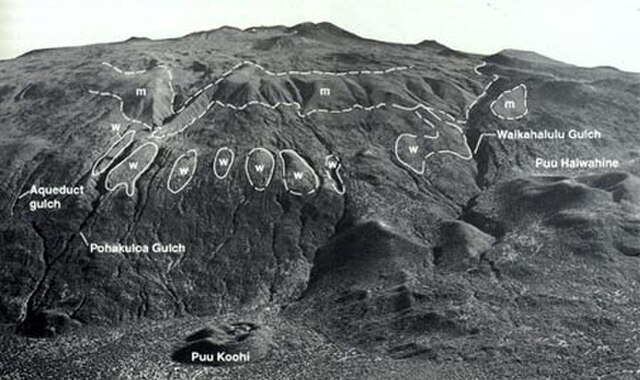The Mauna Kea Observatories (MKO) are a group of independent astronomical research facilities and large telescope observatories that are located at the summit of Mauna Kea on the Big Island of Hawaiʻi, United States. The facilities are located in a 525-acre (212 ha) special land use zone known as the "Astronomy Precinct", which is located within the 11,228-acre (4,544 ha) Mauna Kea Science Reserve. The Astronomy Precinct was established in 1967 and is located on land protected by the Historical Preservation Act for its significance to Hawaiian culture. The presence and continued construction of telescopes is highly controversial due to Mauna Kea's centrality in native Hawaiian religion and culture, as well as for a variety of environmental reasons.
Mauna Kea Observatories
Mauna Kea Observatories seen from the base of Mauna Kea
The Submillimeter Array of radio telescopes at night, lit by flash.
From left-to-right: United Kingdom Infrared Telescope, Caltech Sub-Millimeter Observatory (closed 2015), James Clerk Maxwell Telescope, Smithsonian Sub-Millimeter Array, Subaru Telescope, W.M. Keck Observatory (I & II), NASA Infrared Telescope Facility, Canada–France–Hawaii Telescope, Gemini North Telescope
Mauna Kea is an inactive shield volcano on the island of Hawaiʻi. Its peak is 4,207.3 m (13,803 ft) above sea level, making it the highest point in Hawaii and second-highest peak of an island on Earth. The peak is about 38 m (125 ft) higher than Mauna Loa, its more massive neighbor. Mauna Kea is unusually topographically prominent for its height: its wet prominence is fifteenth in the world among mountains, at 4,205 m (13,796 ft); its dry prominence is 9,330 m (30,610 ft). This dry prominence is greater than Mount Everest's height above sea level of 8,848.86 m (29,032 ft), and some authorities have labeled Mauna Kea the tallest mountain in the world, from its underwater base. Mauna Kea is ranked 8th by topographic isolation.
Mauna Kea in December 2007, with its seasonal snow cap visible
Lava flows from Mauna Loa caught by one of the International Gemini Observatory's Cloudcams, which operates 24/7 near the snow-covered summit of Maunakea (the highest point in the image).(on 27 November 2022).
Scoria and cinder cones on Mauna Kea's summit in winter
Glacial evidence on Mauna Kea, outlining terminal moraines ("m") and till ("w")








